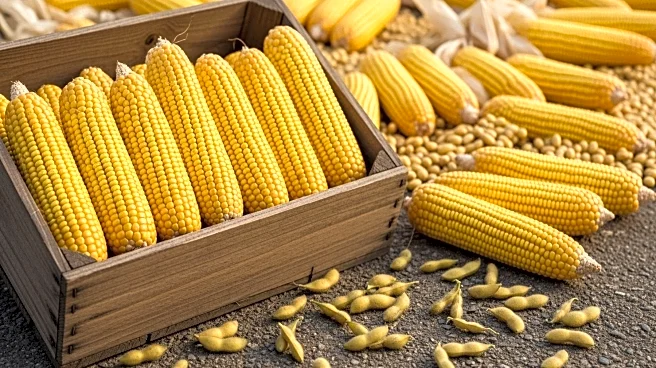What's Happening?
The U.S. Department of Agriculture (USDA) has projected record corn production for the 2025/2026 marketing year, estimating an output of 16.742 billion bushels with a yield of 188.8 bushels per acre. This marks a significant increase from the previous year's production of 14.867 billion bushels. However, soybean production is expected to decline to 4.292 billion bushels, despite a higher yield of 53.6 bushels per acre, due to a reduction in harvested acreage. The USDA also reported that 4% of U.S. corn has been harvested, with Texas and North Carolina leading the progress. Overnight trading saw corn futures fall by 2 cents to $4.17 3/4 a bushel, while soybean futures dropped by 3 1/2 cents to $10.27 3/4 a bushel.
Why It's Important?
The USDA's forecast of record corn production could have significant implications for the agricultural sector, potentially leading to lower prices due to increased supply. This may benefit consumers but could pressure farmers' profit margins. The decline in soybean production, despite higher yields, reflects challenges in maintaining acreage, which could impact market dynamics and pricing. Additionally, the forecasted decline in Brazilian beef exports and production may affect global meat markets, influencing U.S. beef exports and prices. These developments are crucial for stakeholders in agriculture, including farmers, traders, and policymakers, as they navigate market conditions and plan for future production cycles.
What's Next?
As the harvest progresses, market participants will closely monitor weather conditions and their impact on crop yields. The USDA's projections will guide trading strategies and influence commodity prices. Stakeholders will also watch for updates on Brazilian beef exports, which could affect global supply chains and U.S. market positioning. Additionally, potential weather disruptions in Kansas and South Dakota could impact local agricultural activities, necessitating preparedness for adverse conditions.














